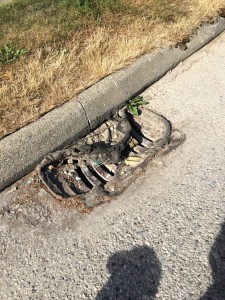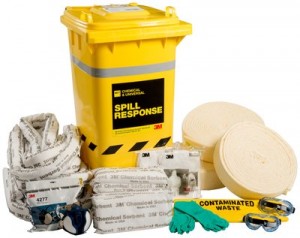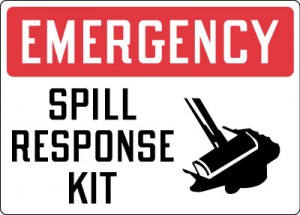There are three main ways to mitigate the potential negative effects that can occur during the excavation phase of a construction project: timing works around precipitation events, installing and maintaining effective erosion control and being prepared to deal with any fuel or hydraulic fluid spills that might occur as a result of large machinery working onsite.
- Timing of works to reduce excavation work occurring during precipitation events.
The Government of Canada maintains a Canadian Climate Data site where information about current and historical precipitation events can be obtained. Information about past climate events as well as current events can be obtained from this database. This information can be used to schedule excavation works to take place during periods of statistically low precipitation.
Due to the current practice of removing the majority of vegetation from residential construction sites, rain splash or raindrop erosion is the primary source of sediment formation on construction sites. Rain splash erosion occurs when rain hits a particle of unprotected soil, dislodging the particle, which can then be transported by surface water flow as sediment into the storm water system.
Mitigation Practices:
- Time works so that excavation does not take during rain events
- Plan accordingly in order to have other works to do that can take place if excavation is delayed due to precipitation
Diagram Source: UBC Wiki http://wiki.ubc.ca/LFS:SoilWeb/Soil_Management/Soil_Erosion
- Proper erosion control to mitigate the formation of sediment
Construction sites with poorly implemented erosion and sediment control measures can cause direct damage to aquatic ecosystems when erosion occurs and sediment leaves to construction site and enters into the surrounding aquatic environment. Sediment typically enters into the storm water system by surface water flow during precipitation events.
Soil erosion is a natural process that occurs when wind, water or gravity act upon exposed soil and cause particles of soil to detach and become mobile. While erosion is a natural process, during the excavation phase of a project, erosion rates are sped up considerably in comparison to the naturally occuring background rates of soil erosion. Sediment is the product of erosion taking place on exposed soils.
Sediment introduced into watercourses can lead to an increase in water turbidity, which is measured in units of NTU, or Nephelometric Turbidity Units. NTU measurements are based on the amount of light that passes through a sample of water. As stated in the Canadian Water Quality Guidelines for the Protection of Aquatic life, sediment introduced into watercourses can smother stream spawning beds, physically damage the gill structures of fish, inhibit the ability of aquatic organisms to find food and also reduces the resistance of fish to fight disease.
Mitigation Practices:
- Proper site staging to ensure that the maximum amount of existing vegetation is left in place during the excavation phase
- Cover all exposed soil as soon as soils are exposed
- Continue to cover exposed soil as soil is moved around site and as soil stockpiles are formed and reformed
- Leave a continuous buffer of vegetation around the site perimeter to intercept any sediment that might be transferred off site via surface water flow
- As a final barrier, install and maintain proper catch basin protection (link to products and add photos of poorly maintained catch basins)
- Do not rely on catch basin protection to ensure no sediment is transferred to the storm water system; catch basin protection is a back up barrier and should not be the first line of defence
- Fuel and hydraulic spill preparedness & Impacts from heavy machinery
Heavy machinery is used onsite during many phases of construction projects. During excavation there are often multiple machines working onsite including excavators, dump trucks, backhoes, stone slingers and potentially many other machine types. Aside from contributing to soil compaction, the potential to spill hydraulic fluid and other fuels onsite is significant during this phase due to the use of heavy machinery onsite. Hydraulic fluids move pressure from one place to another in heavy machinery and when hydraulic lines break, this fluid can be released into the environment either by leaching into the surrounding groundwater or directly by way of the storm water system.
All hydraulic fluids and fuels have a negative effect if they are released into the surrounding environment, but the choice in which fluids to use can help to minimize the impact if environmentally compatible fluids are used as opposed to traditional fluids. Knowledge about how to efficiently clean up any spilled fluid is also key in preventing damage to the surrounding environment.
Mitigation Practices:
- Require all sites to have adequate spill response kits onsite at all times, there are many different kits available, ensure that the spill response kit onsite can handle a large enough volume of material so that any spills that occur are mitigated correctly
- Require that all staff onsite know how to use spill kits
- Require heavy machinery operators to use hydraulic fluids that are less toxic, or more environmentally compatible, than traditional hydraulic fluids
- Ensure all staff working on site know how to use spill kits and have a spill response system in place






